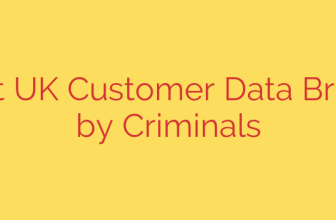
Beyond the Login: 10 Powerful Strategies to Boost LMS Engagement and Learner Retention
A Learning Management System (LMS) is a significant investment for any organization, promising streamlined training, centralized knowledge, and measurable development. Yet, many companies face a frustrating reality: low user engagement. An LMS is only effective if employees actively and consistently use it. If your platform has become a digital ghost town, it’s time to transform it from a passive content repository into a dynamic hub for growth.
Implementing the right strategies can dramatically increase learner engagement, improve knowledge retention, and maximize the return on your training investment. Here are ten essential strategies to breathe new life into your LMS.
1. Gamify the Learning Experience
People are naturally motivated by achievement and friendly competition. Introducing game-like elements, or gamification, into your training modules is one of the most effective ways to drive engagement. Instead of simply completing a course, learners can earn points, unlock badges, and see their names climb a leaderboard.
This approach taps into intrinsic motivators, making learning feel less like a mandatory task and more like a rewarding challenge. Start by implementing a points system for course completions, award custom badges for mastering a new skill, and display a monthly leaderboard to recognize top learners.
2. Embrace Microlearning
In today’s fast-paced work environment, few employees have time for hour-long training sessions. Microlearning breaks down complex topics into short, focused, bite-sized modules that are typically 3-7 minutes long. These modules can be easily consumed during a coffee break, on the commute, or whenever an employee has a few spare moments.
This “just-in-time” learning approach respects employees’ schedules, boosts knowledge retention, and makes information more accessible. Convert lengthy courses into a series of short videos, quick-read articles, or interactive quizzes that focus on a single learning objective.
3. Prioritize Mobile-First Accessibility
Your workforce is increasingly mobile, and your training should be too. An LMS that isn’t fully optimized for mobile devices creates a major barrier to entry. Learners expect the flexibility to access training materials anytime, anywhere, on any device.
Ensure your LMS offers a seamless, responsive experience on smartphones and tablets. This allows employees to engage with content on their own terms, whether they’re on a train, waiting for a meeting, or away from their desk. A mobile-friendly platform isn’t just a feature—it’s a necessity.
4. Foster Social and Collaborative Learning
Learning is often most effective when it’s a shared experience. Integrate social learning features into your LMS to build a community and encourage peer-to-peer interaction. This transforms solitary learning into a collaborative journey.
Enable features like discussion forums where learners can ask questions and share insights. Implement group projects or peer review assignments to encourage teamwork. When employees can learn from each other’s experiences and expertise, engagement and understanding skyrocket.
5. Create Personalized Learning Paths
A one-size-fits-all approach to training rarely works. Employees are more motivated when they feel the content is directly relevant to their roles, challenges, and career aspirations. Use your LMS to create personalized learning paths tailored to individual job functions, skill gaps, or development goals.
Work with managers to identify specific needs for their teams and assign curated course playlists. When employees see a clear connection between the training and their personal and professional growth, their motivation to participate increases dramatically.
6. Implement a Blended Learning Model
Solely relying on self-paced digital courses can lead to learner isolation. A blended learning approach combines the flexibility of online learning with the interactive benefits of live instruction. This hybrid model caters to different learning styles and keeps the experience fresh.
Supplement your LMS courses with live webinars, virtual workshops, or in-person coaching sessions. Use the LMS as the central hub for all pre-reading, follow-up materials, and session recordings, creating a cohesive and comprehensive learning journey.
7. Actively Promote Your Courses
You can have the best training content in the world, but it won’t matter if no one knows it exists. Treat your LMS courses like an internal marketing campaign. Regularly communicate new course offerings, highlight success stories, and explain the benefits of specific training programs.
Use internal newsletters, team meeting shout-outs, and company-wide chat channels to generate buzz. Send targeted email reminders to employees who could benefit from a particular course. Consistent promotion is key to keeping your LMS top-of-mind.
8. Gather and Act on Learner Feedback
Your learners are your best source of information for improving the training experience. Make it easy for employees to provide feedback on courses and the platform itself, and then demonstrate that you are listening.
Incorporate short surveys at the end of modules and use the analytical tools within your LMS to track course completion rates, drop-off points, and quiz scores. Use this data to identify unpopular or ineffective content and make data-driven improvements. Acting on feedback shows employees you value their input and are committed to providing a high-quality experience.
9. Secure Managerial Buy-In and Involvement
Managers have a powerful influence on their team’s priorities. When managers actively champion professional development and encourage the use of the LMS, employees are far more likely to participate.
Equip managers with dashboards to track their team’s progress and empower them to recommend specific courses during one-on-one meetings. When learning becomes a part of the regular performance conversation, it is elevated from a background activity to a core job expectation.
10. Offer Meaningful Recognition and Certification
Completing a challenging course is a significant accomplishment. Acknowledge and reward this effort by offering formal certifications or other forms of recognition. This validates the learner’s hard work and provides them with a tangible credential for their achievement.
Create official certificates of completion that employees can share on their professional profiles or add to their personnel files. Publicly recognize top learners in company meetings or newsletters. This creates a powerful incentive for others to engage and reinforces a company culture that values continuous learning.
Source: https://collabnix.com/10-ways-a-learning-management-system-transforms-employee-engagement-and-retention/








